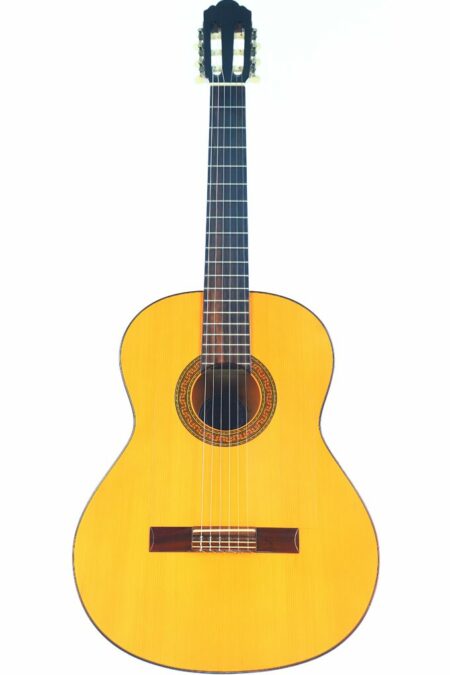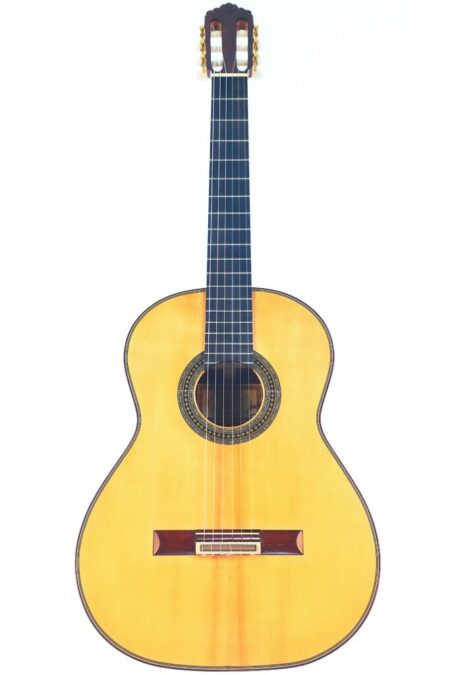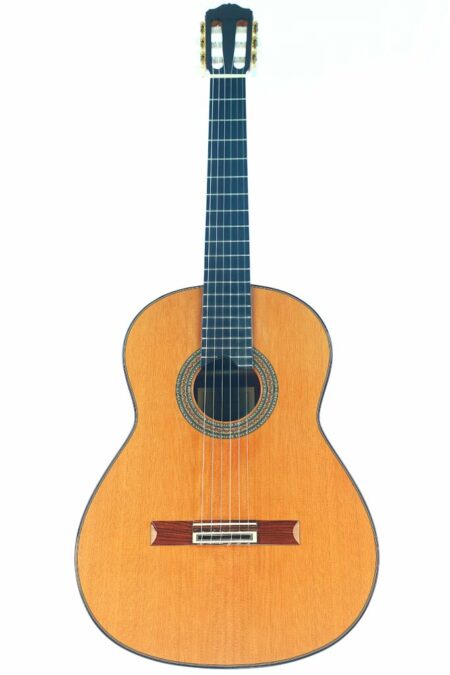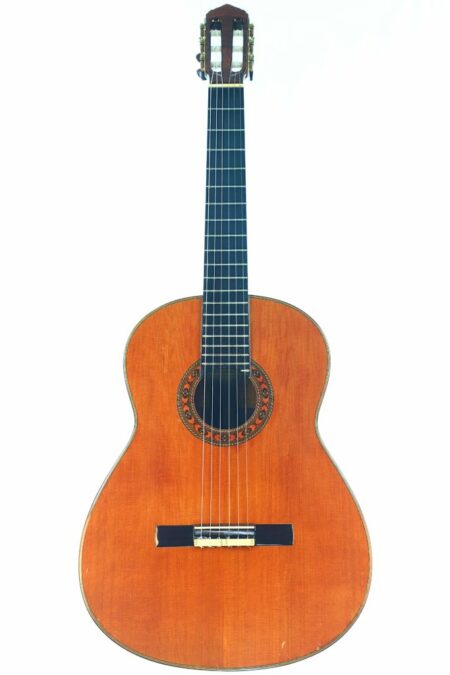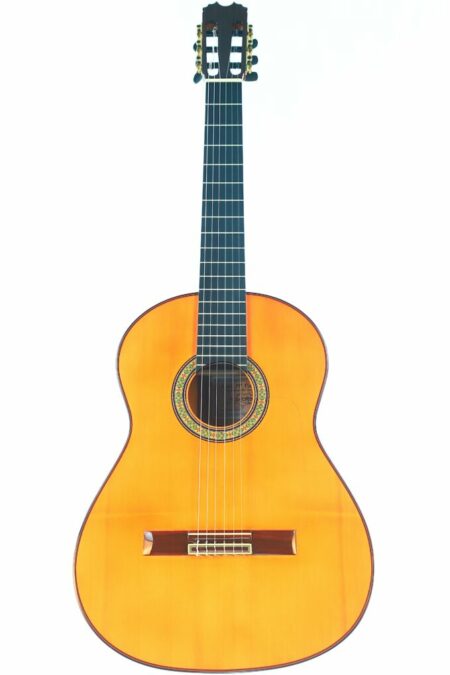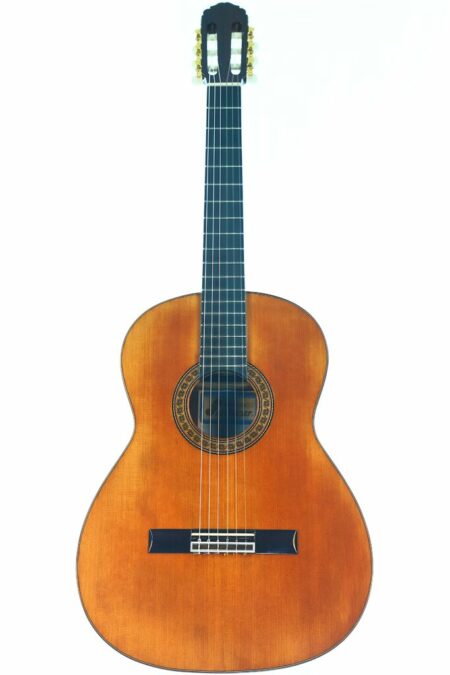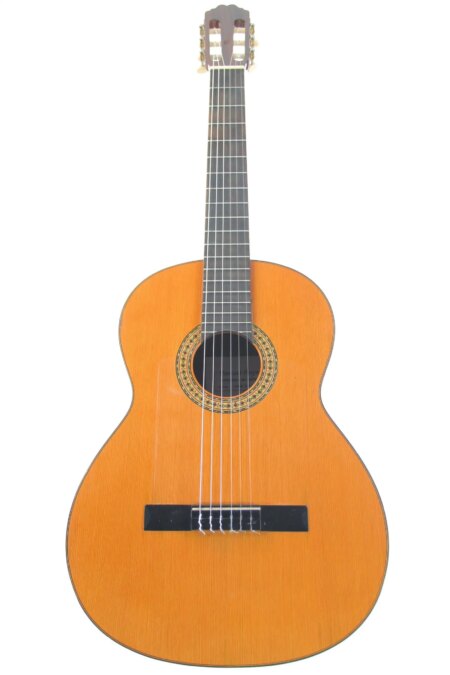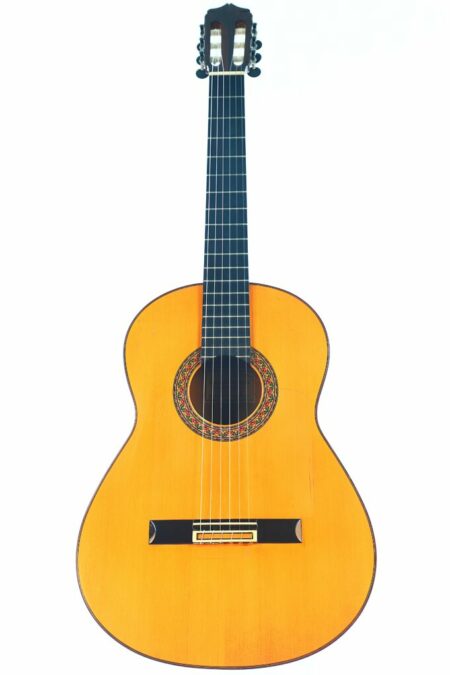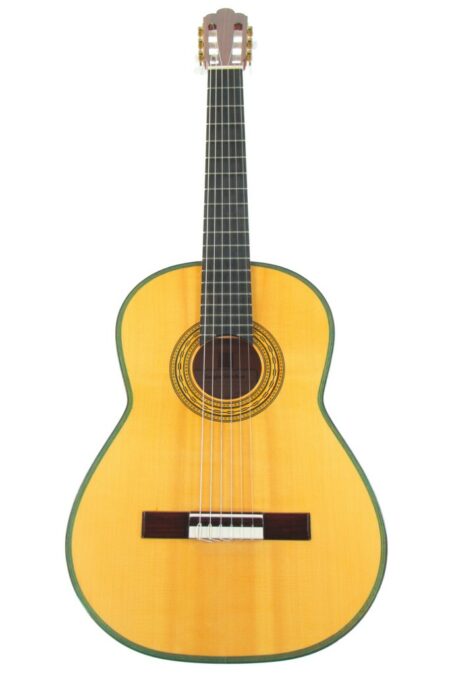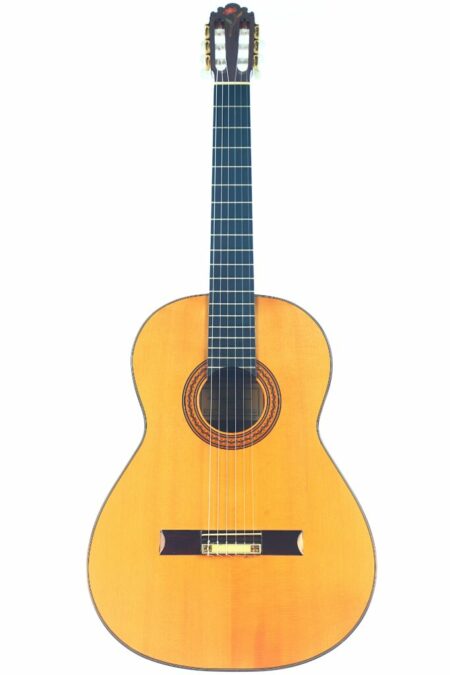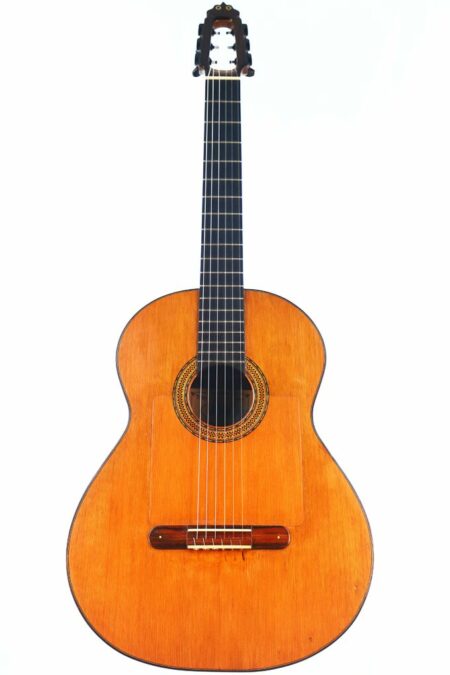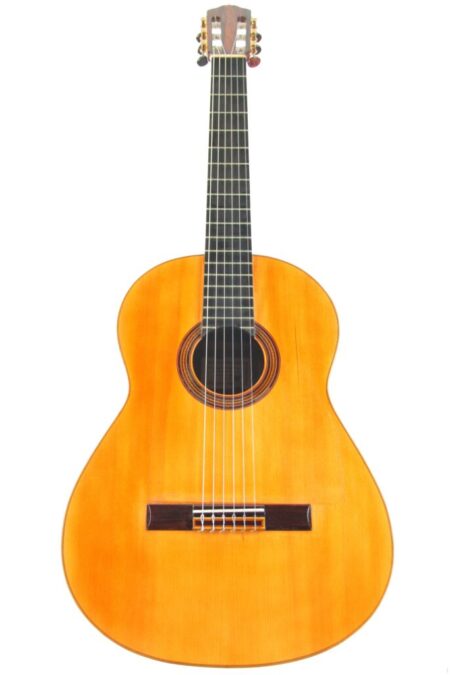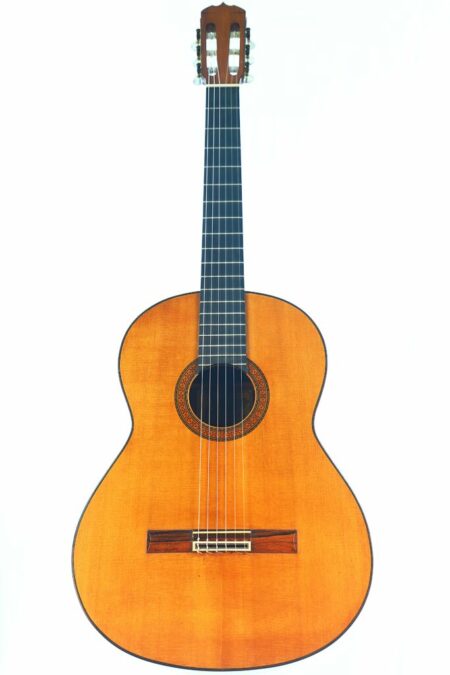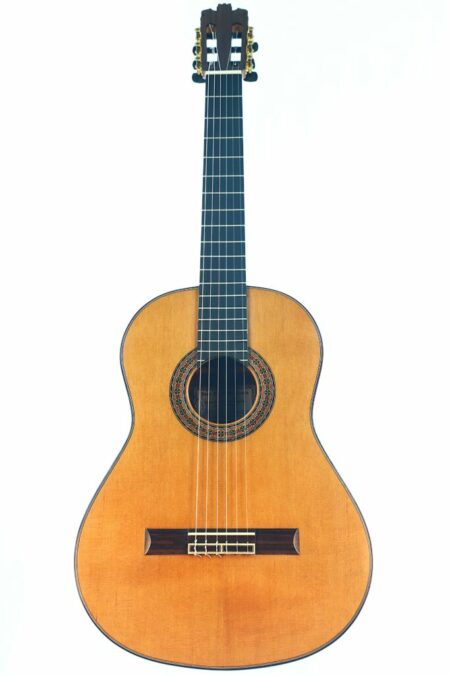Spanish Guitars
Spanish Guitars with Tradition – For Lovers of True Sound Culture
Spanish guitars represent soul, craftsmanship, and musical heritage. Whether as a classical concert guitar or a flamenco guitar, they offer a unique sound profile shaped by noble woods such as rosewood or ebony. The solid construction and precise mechanics ensure a balanced playing experience and brilliant tones.
Discover high-quality Spanish guitars now – from traditional models to modern masterpieces with authentic origins!
-
Jose Ramirez Flamenco Guitar
plus Shipping
-
Manuel Ordono 2023 Flamenco Guitar
plus Shipping
-
Felipe Conde CE2 2022 Classical Guitar
plus Shipping
-
Michel Donadey 1986 Classical Guitar
plus Shipping
-
José M. Palmero 2024 Flamenco Guitar
plus Shipping
-
Manolo Sanlucar 2001 Flamenco Guitar
plus Shipping
-
Juan Estruch 1972 Flamenco Guitar
plus Shipping
-
Manuel Reyes ~1990 Flamenco Guitar
plus Shipping
-
Gabriela Casas ~1980 Classical Guitar
plus Shipping
-
Anselmo Solar Gonzalez 1977 Classical Guitar
plus Shipping
-
Lorenzo Alvarez 1982 Flamenco Guitar
plus Shipping
-
Antonio de Torres SE 112 by Sergio Sanchez
plus Shipping
-
Antonio Gonzalez Cardenal 2001 Flamenco Guitar
plus Shipping
-
Manuel Contreras 1982 Classical Guitar
plus Shipping
-
Miguel Garcia Cabezas 2000 Classical Guitar
plus Shipping
-
Viuda Y Sobrinos de Domingo Esteso 1940’s Flamenco Guitar
plus Shipping
-
José Ramirez 1a 1960 Classical Guitar
plus Shipping
-
Arcángel Fernández 1964 Flamenco Guitar
plus Shipping
-
Juan Fernandez Utrera 2024 “Negra” Flamenco Guitar
plus Shipping
-
Pena Vargas 2015 Flamenco Guitar
plus Shipping
Spanish Guitars – Sound, Origin & Craftsmanship from Spain
What makes Spanish guitars so special?
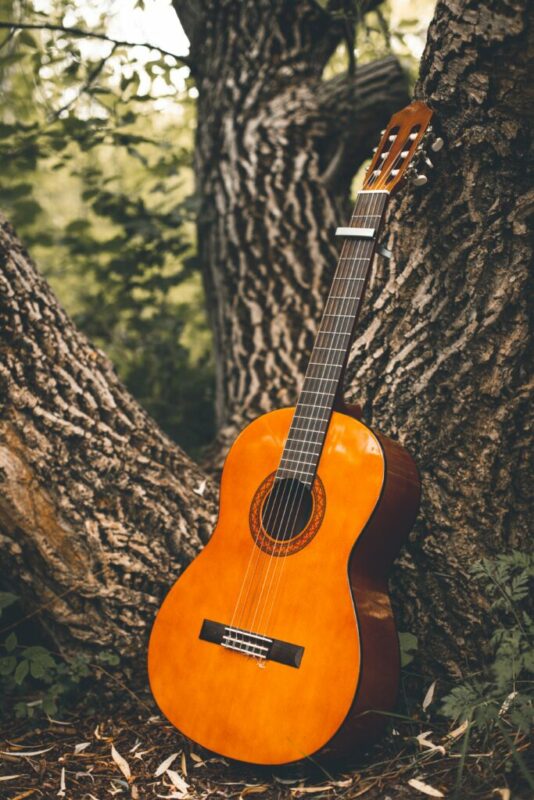 Spanish guitars, particularly classical and flamenco guitars, are distinguished by their unique construction and the use of fine woods. They typically consist of solid-tonewoods, with the body, neck, and fingerboard crafted from carefully selected materials. This construction not only enhances sound quality but also allows for better resonance and projection.
Spanish guitars, particularly classical and flamenco guitars, are distinguished by their unique construction and the use of fine woods. They typically consist of solid-tonewoods, with the body, neck, and fingerboard crafted from carefully selected materials. This construction not only enhances sound quality but also allows for better resonance and projection.
Another important aspect is the use of high-quality woods like rosewood, cypress, maple, and ebony. For the top, spruce or cedar is used. All these woods contribute to the development of a warm, full sound that is ideal for the complex harmonies and melodies found in Spanish music. The combination of these materials and traditional craftsmanship results in instruments that are both musically and aesthetically pleasing.
Spanish guitars play a significant role in folklore, classical music, and flamenco. In classical music, they are known for their soft melodies and expressive sound, while in flamenco, they are valued for their rhythmic and percussive elements. This cultural significance makes Spanish guitars an indispensable part of musical culture and a favored instrument for many musicians worldwide.
Spanish Guitars vs. Classical Guitars – A Comparison
Spanish guitars, whether classical or flamenco, are known for their unique shape, sound, and playing style. The construction of these guitars is often solid, leading to a warm, resonant tone.
The modern construction of classical guitars has its roots in Spain, which explains the term "Spanish guitar." These instruments are closely related to concert guitars and acoustic guitars, each with its specific features and sound characteristics. While acoustic guitars (also known as steel string guitars) are often equipped with steel strings, producing a brighter sound, Spanish and classical guitars offer a softer, fuller tone.
For more information on related instruments, click here: → Flamenco Guitars and → Vintage Guitars.
Sound Quality & Playing Feel – What Distinguishes Spanish Guitars
The sound quality and playing feel of Spanish guitars are significantly influenced by the choice of wood, construction, strings, and mechanics. Fine woods like cedar/spruce and rosewood/cypress/maple provide a warm, full sound, while the solid construction ensures excellent resonance and projection. The use of nylon strings further contributes to a smooth playing experience and pleasant feel while playing.
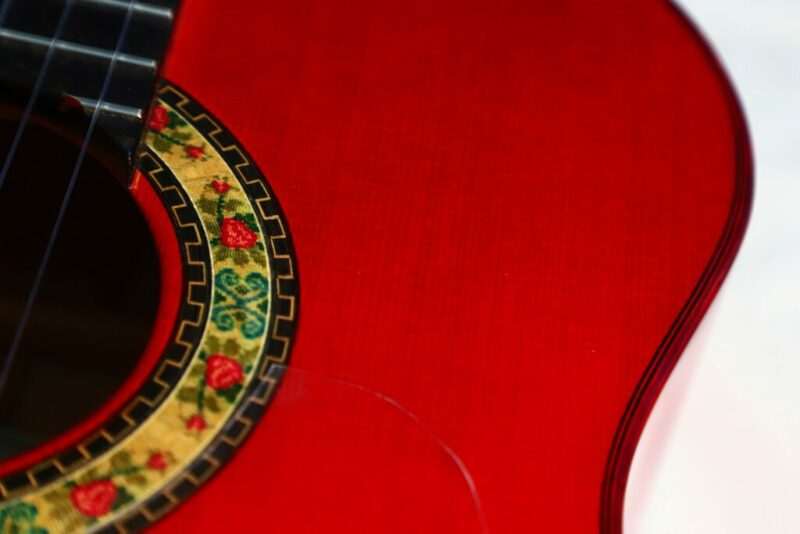 Spanish guitars offer a distinctive sound quality that is ideal for transcriptions, compositions, and improvisations. These instruments are popular not only for classical pieces and traditional guitar music but also for flamenco and fingerstyle techniques that require an expressive sound. The combination of high-quality construction and top-notch materials makes Spanish guitars a preferred tool for musicians looking to fully express the nuances of their art.
Spanish guitars offer a distinctive sound quality that is ideal for transcriptions, compositions, and improvisations. These instruments are popular not only for classical pieces and traditional guitar music but also for flamenco and fingerstyle techniques that require an expressive sound. The combination of high-quality construction and top-notch materials makes Spanish guitars a preferred tool for musicians looking to fully express the nuances of their art.
Origin, Tradition & Spanish Guitarists
Spain is famous for its guitars, as it is the birthplace of modern guitar making and classical music tradition. The art of guitar making has a long history here, dating back to the 15th century when the instrument took on its current form. Notable luthiers like Antonio de Torres revolutionized construction and sound quality, leading to characteristic regional styles.
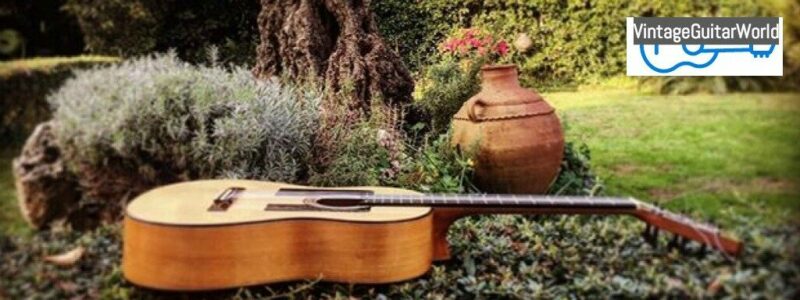 The Spanish guitar has not only shaped the development of the instrument but has also produced numerous famous composers, including Francisco Tárrega and Andrés Segovia, who significantly influenced the guitar repertoire. This tradition continues today in the music scene, where modern Spanish guitarists like Vicente Amigo and Paco de Lucía further develop the genres of flamenco and classical music. The combination of rich history, masterful craftsmanship, and talented musicians makes Spain a distinctive center of guitar culture.
The Spanish guitar has not only shaped the development of the instrument but has also produced numerous famous composers, including Francisco Tárrega and Andrés Segovia, who significantly influenced the guitar repertoire. This tradition continues today in the music scene, where modern Spanish guitarists like Vicente Amigo and Paco de Lucía further develop the genres of flamenco and classical music. The combination of rich history, masterful craftsmanship, and talented musicians makes Spain a distinctive center of guitar culture.
Frequently Asked Questions About Spanish Guitars
| Question | Answer |
|---|---|
| Why do Spanish guitars sound different? | Spanish guitars use fine woods and a solid construction that leads to a warm, resonant sound, setting them apart from other guitars. |
| What is the difference between classical and Spanish guitars? | The classical guitar construction originates from Spain, which is why the terms "classical guitar" and "Spanish guitar" are often used interchangeably. Both refer to instruments known for their nylon strings and solid construction that produce a warm, resonant sound. |
| How are Spanish guitars tuned? | Spanish guitars are typically tuned to standard EADGBE, with the lowest string (E) being the thickest and the highest string (E) being the thinnest. |
| Why is Spain known for its guitars? | Spain is known for its long tradition of guitar making, outstanding luthiers, and famous musicians who have popularized the instrument in classical and flamenco music. |

